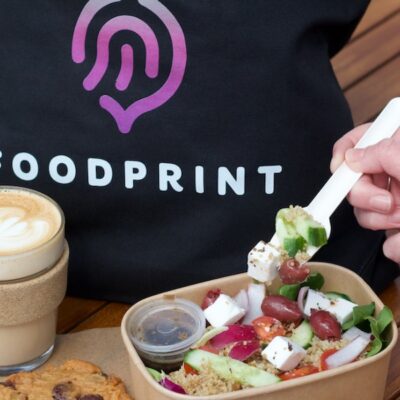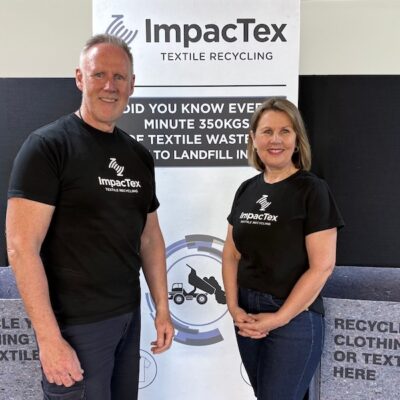Brand under fire: saving face when your reputation’s on the line
Building a strong brand reputation comes from good communication. This can mean the difference between customers and stakeholders forgiving a company for their mistakes, says Kirsten Patterson. When a business comes […]
Building a strong brand reputation comes from good communication. This can mean the difference between customers and stakeholders forgiving a company for their mistakes, says Kirsten Patterson.
When a business comes under attack for anything from sexual harassment in the workplace to racial discrimination, underpaying staff, or overcharging customers through false advertising, it can be earth shattering for directors whose instinct might be to run for cover in the hope of protecting themselves from falling media debris when stories start hitting news headlines and Twitter feeds.
And, dealing with a crisis at a time when the world is under pressure from a global pandemic can compound the problem. Kirsten Patterson (pictured), CEO of the Institute of Directors (IoD), a not-for-profit organisation that provides support to directors and boards on everything relating to governance, says crisis management today is moving faster than it did in the past.
“We’re all saying we used to have 24 hours to respond to media issues and now it feels like we have 24 seconds,” she says.
The reality today is that boards have little time to gather and discuss how to deal with situations as they arise, particularly when events are playing out in real time. Patterson says boards need to have systems in place before the damage or unexpected event occurs.
A qualified lawyer and distinguished fellow of The Human Resources Institute of New Zealand (HRNZ) and Co-deputy Chair of the Global Network of Directors Institutes, Patterson has also sat on a number of boards of not-for-profit organisations. She says in recent years there has been a shift around the role of boards and what is expected of them. This has largely been informed by social change. What is clear is that work around building a positive brand reputation is crucial, not only for shareholders, but also for customers and the broader public.
Building a strong brand reputation also comes from good communication. And, in today’s climate this can mean the difference between customers and stakeholders forgiving a company for their mistakes.
The 7-Eleven example
A prime example of this is around Australia’s 7-Eleven convenience stores and issues involving modern slavery. In a recent case, a lawyer reported to news.com.au (2020) that one of his clients after tallying up his hours realised he was being paid a miniscule 47 cents an hour.
But for the brand, this is not an isolated story. You only need to Google to find a raft of stories associated with 7-Eleven around employment issues that date back to 2015.
“They had people working in those stores not being paid for work, or who weren’t getting their minimum employment conditions being met. And that’s modern slavery,” Patterson says.
“They had a massive reputational issue that was very, very, high profile news all over their Australian media. And the parent company had to lead them through that.”
According to Patterson, the directors could have chosen to step aside and shift the responsibility to their independent franchisees, removing themselves completely from the picture. Instead, the company approached the crisis from a brand and reputation perspective, leading through public responsibility.
“They made payments to all of those people who hadn’t been paid and they engaged particularly with the migrant communities who were most impacted and were working through those stores,” she says.
As a result of facing the fall-out head-on, board members were making unannounced visits to 7-Elevens as part of their own research.
“They were out visiting at 1 o’clock in the morning, not just when people think board members are going to be there. It’s that old saying, that the Queen thinks every bathroom smells like fresh paint and that’s also true for boards because people kind of know when they’re coming, so they make things fresh and tidy.”
Board members also visited the communities most affected and talked to their leaders with a willingness to listen and ask questions to find out what it was really like to work for the brand.
Patterson says in a situation like this the brand could have come out damaged. Instead, they emerged stronger through positive communication and leaning into the problem, which meant their brand positioning increased as a result. But not all organisations come out as successfully.
In the case of American Apparel
An example of where a brand and its reputation proved difficult to recover is American Apparel, founded in 1989 by CEO Dov Charney.
In 2005, the company was listed as one of the 500 fastest growing companies in the United States with a 440% three-year growth and revenues in 2005 of over US$211 million. For American Apparel, the MO was simple: ‘sex sells.’
“You don’t Google it from your work computer because it’s definitely not safe for work,” says Patterson.
The brand quickly gained notoriety for its use of scantily clad models in hyper-sexualised poses, bending the rules of decency to the extreme. But while the brand’s marketing strategy hooked in its younger, edgier consumers the brand’s messaging also filtered down into what emerged as a toxic company culture.
“We were really lucky to have one of their board members come and share that story with us here in New Zealand,” says Patterson of the high profile case, which she is quick to add, ‘wasn’t handled gracefully by its CEO.’
“Companies shouldn’t need rules that state staff have to wear pants at work. And the CEO was very open about having inappropriate relationships with young female staff, which he deemed an occupational hazard.”
When the American Apparel directors had to deal with the media fallout and the company came under attack, Patterson says the board was split.
“So they weren’t in a position to perhaps take the leadership in the same way – and as quickly as they should have. And that is one that has done a lot of damage to the organisation.”
After publicly announcing the termination of the then CEO, American Apparel’s fashion executive, Paula Schneider stepped into his role with a mammoth task to revive the brand. The task at hand, to try and keep American Apparel afloat, as they were also struggling to avoid bankruptcy.
Patterson says in some instances organisations break up, or are unable to maintain their previous brand position.
Looking closer to home, sharing war stories is a much trickier slope to navigate due to our size and ‘two degrees of separation.’ Difficult conversations are much harder, but often essential.
Patterson says in New Zealand this may result in not speaking out when we see that something isn’t right.
“And in the case of boards, if they are split you may need to make a decision of whether to stay or go.”
She says the driving force behind a split would often come down to individual values versus the values held by the board.
“So if you have a ‘values disconnect’ with the organisation in terms of its purpose or its approach, then you’ve really got to consider, can I change it? Am I here for a reason, and am I here to change the organisation’s view?”
She says after considering these factors the individual may need to consider whether they’re prepared to face the potential challenges.
“Because that’s going to take a lot of resilience… but you may need to walk away.”
Quotes for this article have been extracted from an episode of The C-Suite Spot podcast produced by Alexander PR for Company Crisis: www.companycrisis.co.nz






